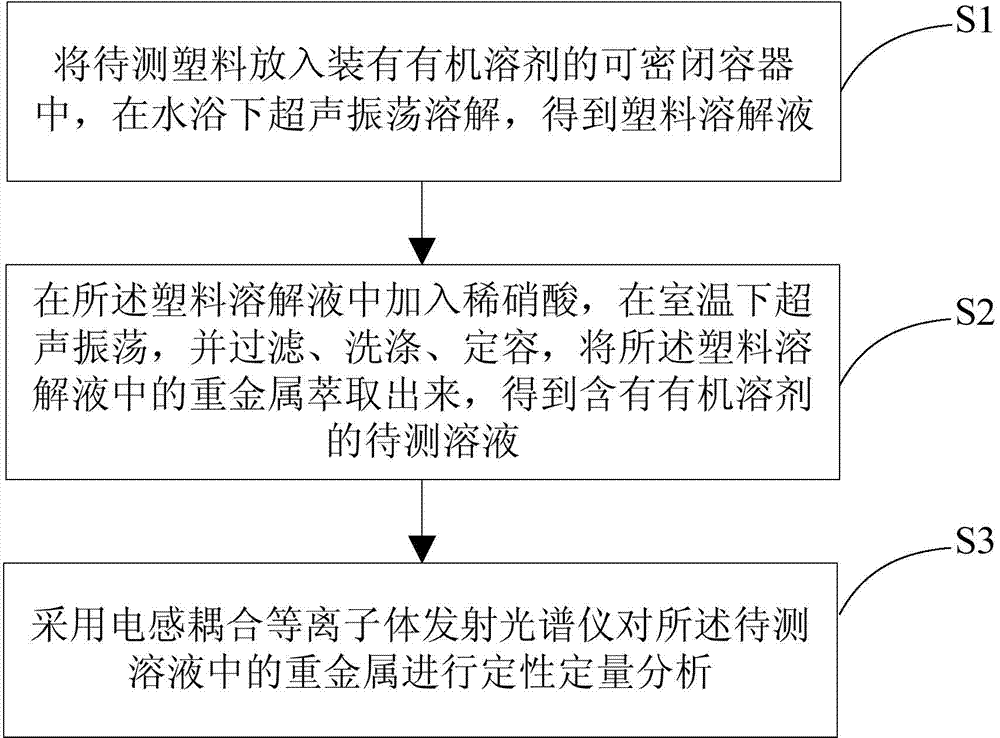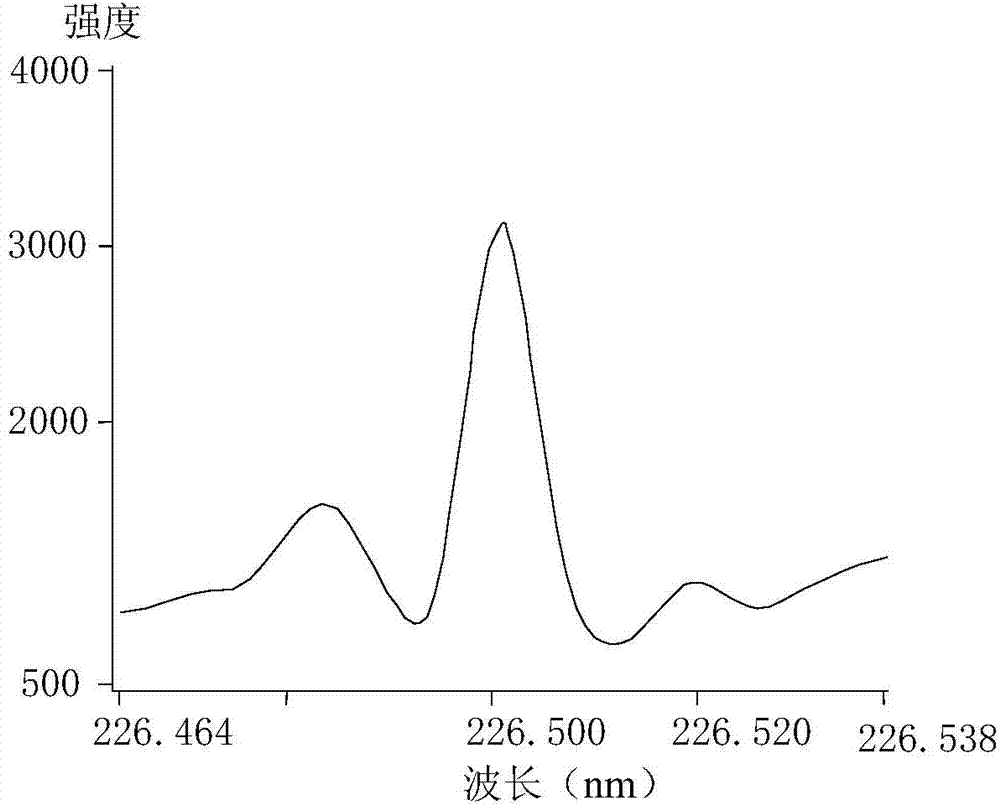Method for detecting heavy metals in plastics
A detection method and technology for heavy metals, applied in the field of heavy metal detection, can solve the problems of reducing ICP-OES analysis performance, affecting ICP stability, ICP instability, etc., to overcome harsh reaction conditions, ensure detection accuracy, and good stability. Effect
- Summary
- Abstract
- Description
- Claims
- Application Information
AI Technical Summary
Problems solved by technology
Method used
Image
Examples
Embodiment 1
[0054] Crush 0.1-0.2g of PVC or PE plastic samples to be tested and put them into a sealable container, add 10mL of tetrahydrofuran, and ultrasonically shake for 60min in a water bath at 80°C to fully dissolve the samples to obtain a plastic solution. Then, 10 mL of 20% (V / V) dilute nitric acid was added to the obtained plastic solution, and ultrasonically oscillated at room temperature for 30 min. Then the above shaken solution was filtered and washed with 20% (V / V) dilute nitric acid, and finally the volume was adjusted to 50 mL to prepare a solution to be tested containing an organic solvent.
Embodiment 2
[0056] Put 0.1-0.2g of the PVC or PE plastic sample to be tested into a sealable container after crushing, add 10mL of tetrahydrofuran, and ultrasonically shake for 45min in a water bath at 85°C to fully dissolve the sample to obtain a plastic solution. Then, 10 mL of 15% (V / V) dilute nitric acid was added to the obtained plastic solution, and ultrasonically oscillated at room temperature for 30 min. Then the above-mentioned shaken solution was filtered and washed with 15% (V / V) dilute nitric acid, and finally the volume was adjusted to 50 mL to prepare a solution to be tested containing an organic solvent.
Embodiment 3
[0058] Crush 0.1-0.2g of the PVC or PE plastic sample to be tested, put it into a sealable container, add 10mL of tetrahydrofuran, and oscillate ultrasonically for 30 minutes in a water bath at 90°C to fully dissolve the sample to obtain a plastic solution. Then, 10 mL of 10% (V / V) dilute nitric acid was added to the obtained plastic solution, and ultrasonically oscillated at room temperature for 30 min. Then the above shaken solution was filtered and washed with 10% (V / V) dilute nitric acid, and finally the volume was adjusted to 50 mL to prepare a solution to be tested containing an organic solvent.
PUM
 Login to View More
Login to View More Abstract
Description
Claims
Application Information
 Login to View More
Login to View More - R&D
- Intellectual Property
- Life Sciences
- Materials
- Tech Scout
- Unparalleled Data Quality
- Higher Quality Content
- 60% Fewer Hallucinations
Browse by: Latest US Patents, China's latest patents, Technical Efficacy Thesaurus, Application Domain, Technology Topic, Popular Technical Reports.
© 2025 PatSnap. All rights reserved.Legal|Privacy policy|Modern Slavery Act Transparency Statement|Sitemap|About US| Contact US: help@patsnap.com



